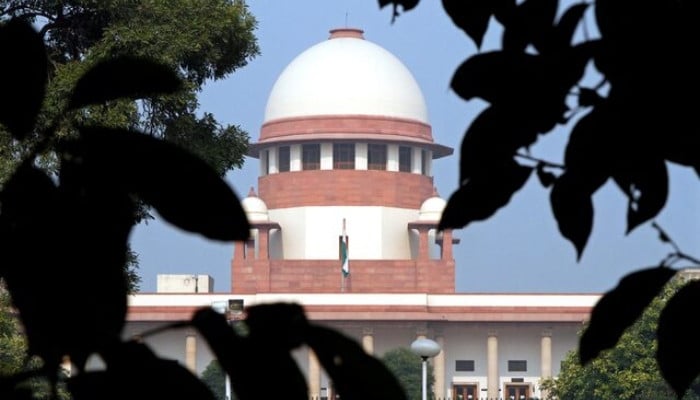Indian Supreme Court Affirms Urdu Use on Maharashtra Signboard
In a significant ruling that underscores the nation’s linguistic and cultural mosaic, the Supreme Court of India has validated the use of Urdu on a municipal council building’s signboard in Maharashtra.
Justices Sudhanshu Dhulia and K Vinod Chandran, presiding over the case, remarked that language embodies culture and should serve as a unifying force, lauding Urdu’s crucial role in the Ganga-Jamuni and Hindustani cultural synthesis.
The decision arose from a challenge by a former councillor who disputed Urdu’s presence on the Patur Municipal Council building in the Akola district.
The court dismissed the appeal, asserting that the use of Urdu is sanctioned under the Maharashtra Local Authorities (Official Languages) Act, 2022, and does not contravene any legal provisions.
Justice Dhulia’s written judgment stressed the need to re-evaluate preconceptions about language. He emphasized Urdu’s contribution to India’s diverse cultural heritage and supported linguistic inclusion in public spaces.
“Our misconceptions, or even biases against a language, must be boldly and truthfully examined against the backdrop of our nation’s great diversity. Our strength should never be our weakness. Let us embrace Urdu and every language,” the SC declared.
The court directly countered the “misconception that Urdu is foreign to India,” firmly stating that “it is a language born in this very land”.
“Language transcends religion; it belongs to a community, a region, a people, not a particular faith,” Dhulia clarified.
The court underscored that the primary function of language is for communication, stating, “Before it became a tool for learning, its initial and foremost purpose remains communication… The use of Urdu here is solely for communication purposes.”
“The municipal council’s intention was simply to communicate effectively, the core function of language, as emphasized by the Bombay High Court.”
The Indian SC emphasized India’s expansive linguistic diversity, citing the 2001 census data that documented 122 major languages and 234 mother tongues, noting that Urdu is the sixth most spoken language, present throughout India.
The 2011 Census indicated an increase to 270 mother tongues (considering those with a minimum of 10,000 speakers), inferring that the actual number could be in the thousands.
Addressing the historical context, the court stated that the “prejudice against Urdu arises from the misconception that Urdu is alien to India,” clarifying that Urdu, similar to Marathi and Hindi, is an Indo-Aryan language developed in India to facilitate intercultural communication.
“Over the centuries, it achieved greater refinement and became the preferred language for numerous celebrated poets,” the judgment noted.
The court highlighted Urdu’s widespread influence in everyday Hindi and Indian legal terminology, citing examples such as “adalat” (court), “halafnama” (affidavit), and “peshi” (appearance before court), and terms within the Supreme Court like “vakalatnama” (document of power of attorney).
The court also noted that several Indian states and union territories have embraced Urdu as an additional official language.
“When we critique Urdu, we indirectly critique Hindi, as linguists and literary scholars consider them to be one and the same language.”
The court mentioned that “under Article 343 of the Constitution, Hindi is the official language, while English was permitted for official use for 15 years.
“This, however, does not imply that Hindustani and Urdu have disappeared, as this was never the intention of those who framed the Constitution.”
“Even now, the language of the common populace is filled with Urdu words, whether one realizes it or not.”
Ultimately supporting the High Court’s perspective, the SC bench concluded that a municipal council aiming to serve its local residents is simply communicating effectively by using Urdu on a signboard along with the official language (Marathi), which should not be opposed if a segment of the population is familiar with it.
“Language is a medium for exchanging ideas, fostering unity among people with diverse viewpoints and beliefs, and it should not incite division,” the bench stated firmly.



Comments (0)
No comments yet. Be the first to comment!
Leave a Comment